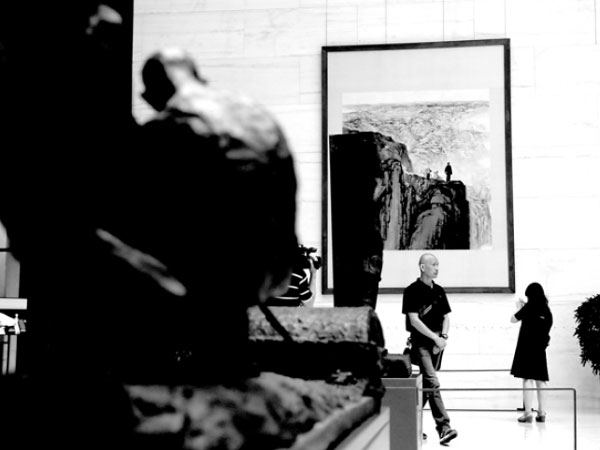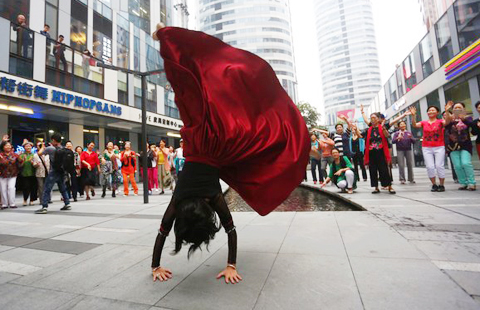Artist Shi Lu honored with research center
Updated: 2014-09-23 07:14
By Lin Qi(China Daily)
|
|||||||||||
The National Museum of China recently launched a research institute for the works of late painter Shi Lu, a first at the Beijing-based museum to study modern Chinese art.
The Research Center of Art of Shi Lu was formed on the basis of family donations totaling nearly 300 works by Shi Lu (1919-82), a 20th-century master of Chinese art, who founded the celebrated Chang'an Painting School along with fellow painter Zhao Wangyun.
Shi Lu was born in Sichuan province as Feng Yaheng. He lived in Shaanxi province for several decades until his death. He took the pseudonym Shi Lu, taking the name from two people he admired: Qing Dynasty (1644-1911) painter Shi Tao and writer Lu Xun (1881-1936).
|
Shi Lu's masterpiece Fight in Northern Shaanxi is permanently displayed at the National Museum of China. Jiang Dong / China Daily |
Shi Lu's family donated 151 of his paintings in 2012 and more recently gave another 142 of his paintings, calligraphic works and sketches between the 1950s and '70s.
The collections include Redeveloping the Terraced Field in Mountains, a massive painting that he made in 1958 to portray the construction of terraced fields in mountainous Shaanxi province during the Great Leap Forward movement.
This painting was also at the center of a lawsuit over ownership.
It had won wide acclaim as an unrivaled example of Shi Lu's "construction scene-themed landscapes" and his artistic view that "one hand stretches out to tradition and the other to life".
In 2010, his family received 44.57 million yuan ($7.26 million) at an auction by the Beijing Googut Auction Co. The buyer from Shandong province, however, later complained that the auction house had employed fake bidders to push up the price during the sale and filed a lawsuit. A local court ruled the auction invalid.
Googut then sold the painting to Zhang Zhenyu, a collector from Hainan province, against the wishes of Shi Lu's family.
It took the family about two years to win a lawsuit in favor of the painting's return to them, and finally last month, they handed it over to the National Museum of China.
Many families who inherit art are faced with the same problem: whether to make use of the assets as a source of income or to donate them to public institutions so that they benefit more people, says Chen Lyusheng, deputy director of the National Museum of China.
The second donation includes a draft of Shi Lu's iconic East Crossing. The painting depicts a scene of grandeur and a historical moment in which Mao Zedong and his army cross the Yellow River eastward on a boat, signifying a turning point in the War of Liberation (1946-49).
Shi Lu painted it in 1964 to celebrate the 15th anniversary of the 1949 founding of New China. But the original work got lost in the turbulence of the "cultural revolution" (1966-76).
Yang Xiaoyang, head of the China National Academy of Painting, says Shi Lu is "a high mountain that followers find it impossible to climb over" in the history of the country's modern art.
His art marks an important transition for the classical shuimo (ink-and-wash) painting. Shi Lu gave it a modern context, Yang says. "He left irreplaceable influences in painting and art theory."
Shi Lu was among the first few to propose the concept of yi shen xie xing, meaning that artists should use their imagination rather than just reproduce physical forms of what they saw.
His artwork reflects a combination of Realism, Romanticism, Modernism and Symbolism, Yang adds.
Shi Lu's painting Fight in Northern Shaanxi is permanently displayed at the National Museum of China's central hall. It was commissioned for the 10th anniversary of the founding of New China, but upon completion drew criticism from some quarters for depicting a small image of Mao, with his back turned to people against a grand landscape.
He was also imprisoned during the "cultural revolution".
Shi Lu insisted upon his innovative approach to reforming Chinese painting and suffered a mental breakdown.
With his reputation restored after the "cultural revolution", Shi Lu went back to painting and sketching at home and abroad. He died of stomach cancer at age 63.
The research center has employed some 27 Chinese art specialists to study, curate and preserve Shi Lu's works. A compilation of his works' titles is due out in 2016.
linqi@chinadaily.com.cn
(China Daily 09/23/2014 page20)
Today's Top News
China to start direct yuan-euro trade
Protest disrupts life in Hong Kong
Slim waist fad causing problems
Americans split over role of gov't in their lives: Gallup
Spanish diplomat killed in Sudan
Independence of MH17 probe 'crucial'
Illegal assembly in Hong Kong leads to clashes
Aggrieved firms 'should go to court'
Hot Topics
Lunar probe , China growth forecasts, Emission rules get tougher, China seen through 'colored lens', International board,
Editor's Picks

|
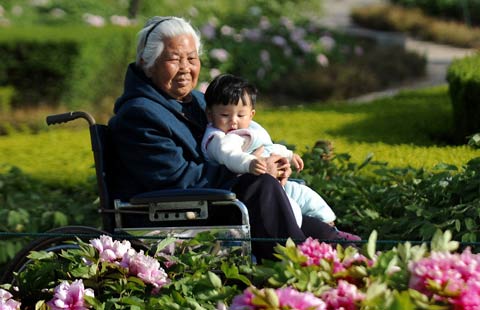
|

|
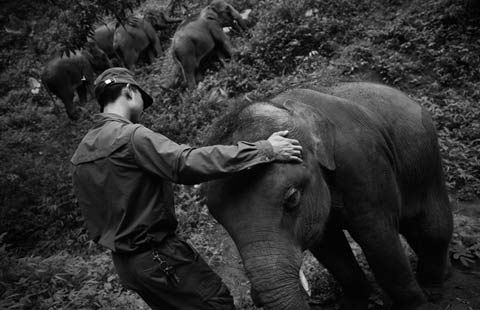
|

|
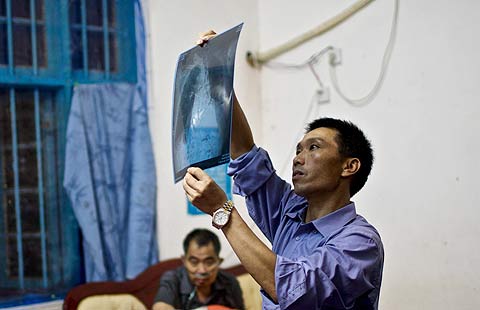
|
